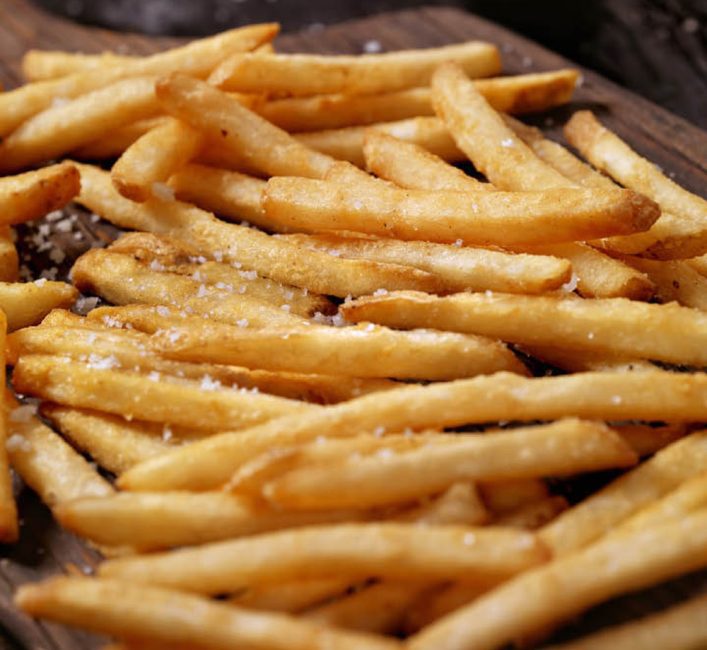Circana food industry analyst Vince Sgabellone visibly brightens when he recalls the childhood Sundays when his family wandered the Ottawa Valley hunting for the best chip wagon.
“Those days before social media, my parents would follow a tip they heard from somebody at work or one of the neighbours about a food truck parked on the side of the highway in a little town just half an hour out of Ottawa,” he told Manitoba Potato Production Days attendees in late January.
“We’d hop in the car, go for a drive and, if we couldn’t find it, we still had our favourites, so either way we always ended with a nice steaming box of french fries from a food truck. What a great experience that was.”
Read Also

RBC invests $5 million in Prairie sustainable agriculture
RBC has launched a farm initiative to support regenerative agriculture, soil health, student training and farm business transition across the Canadian Prairies.
Sgabellone’s parents had recently immigrated from Italy, a culture known for durum-based pasta. But when they discovered fries, they got hooked on the potato.
Representatives from the potato industry descended on Brandon Jan. 23-25 for the annual production conference.
North Americans eat a lot of the tuber. From restaurant entrees to snack food manufacturers like Old Dutch and Tomahawk to the friers of McCain Foods or McDonald’s, potatoes are a key ingredient for the food service industry.
“The french fry is the number one food item served in Canada, same thing in the U.S.,” Sgabellone said. “Burgers are number two, and that’s a distant second. About 13 per cent of all food service meals includes a serving of french fries.”
Circana’s data suggests that Canadians ate 1.2 billion orders of french fries last year, up nine per cent from the previous year.

Pandemic recovery
Sgabellone was a keynote speaker at this year’s Manitoba Potato Production Days, covering food service trends and what they mean for the local potato market.
His employer, Circana, originates from a merger between two research companies: IRI, that once studied Canadian habits in the grocery store, and the NPD Group, covering the food service industry.
The company now uses data from an online survey, where Canadians self-report what they ate in restaurants, and has become a leading advisor on food service consumer behaviour.
“We are the who, what, where, why and how much of the restaurant business in Canada and in 11 other countries around the world.” Sgabellone said. “We’ve got a sample size of 150,000 surveys complete every year, so a lot of robust sample to go on.”
Their data shows the hit to restaurants during the pandemic.
In six previous years of restaurant visits, the number of people patronizing restaurants at the start of 2020 showed a gentle increase of one to three per cent over baseline. That reflects “organic growth that you would expect in a mature restaurant market like Canada, where the growth in restaurant visits pretty much aligns with the population growth in the country,” he said.
Then COVID-19 hit. The trendline took an abrupt dive, losing both a quarter of restaurant visits and 30 per cent of sales in 2020.
Potato growers were already facing fallout by spring of that year. Manitoba’s major contractors, McCain and J.R. Simplot, both cut contracted acres. It was a dose of cold water for growers, who had expected expansions. The United Potato Growers of Canada reported an initial 40 per cent plunge in french fry sales in 2020.
As the year progressed, processors imported potatoes to make up for gaps in local supply. Poor growing conditions reduced Manitoba’s potato yields in 2020 by about 15 per cent.
“It was a tragic year, totally unprecedented in food service in all of our lives,” Sgabellone said. “But let’s focus on the recovery period now.”
There has been double-digit percentage growth in restaurant visits since March of 2021, he noted.
“Canadians love their restaurants and they told us in our studies that the number one thing they missed about closed restaurants was going out with friends and family and enjoying that time together.”
By the end of 2023, however, it appeared the honeymoon-period surge was over. Restaurant growth again dipped sharply, this time driven by economic uncertainty, Sgabellone said.
Circana’s data still shows restaurant demand growing at four to six per cent, which is above the historical trend.
“What that means is that we as an industry can no longer count on that big crush of people coming back into our restaurants,” Sgabellone said.
“Now it becomes a steal-share scenario. Operators have to steal what share they can from the other operators by convincing a potential customer not to eat something else.”
There are two factors at work, he added. The first is what happened when a large segment of the population faced lock-down for more than a year. People become accustomed to doing everything at home. Given this new kind of customer, restaurants have either adapted, becoming masters of the takeout trade, or closed.
The other factor is inflation, making people more budget conscious. This puts restaurateurs in a double bind. Their customer base is reluctant to spend money, while their own purchasing, hiring and operating costs are also subject to inflation.
Many have been forced to raise prices or decrease portion sizes.
“Other people are saying, ‘I still want to go to out but I’m going to save money,’” Sgabellone said. “They say, ‘I’m going to take advantage of promotions and coupons and deals. I’m going to discount. I’m going to order fewer items,’ and that’s not good for a side dish like french fries.”
The industry needs to move away from the transactional visit, where a customer picks up a sandwich as a necessary distraction on the way to doing something else, he said. Instead, he suggested the restaurant trade has to move toward the experiential visit, an event where people socialize and the meal is a form of entertainment.
Canadians today are budgeting for something to experience outside of home, he said. They’ve spent the last few years spending on appliances for cooking and at-home entertainment. Now they want to get out and enjoy concerts, sporting events, camping or picnics.
But vacations and concerts are also expensive, he noted.
“In the context of the price of those sorts of experiences, a restaurant visit, even an expensive restaurant, seems awfully affordable and it can be a fun night out if our industry does it right.”
Sgabellone likes the term “revenge spending,” which involves getting out and doing stuff instead of buying stuff.

Gen Z and the potato market
“When it comes to the older consumers, it’s all about avoidances,” Sgabellone said. “What they eat is pretty much set at that point.”
At the same time, older people are at a point in their lives where they may try to avoid things like sugar, fat or salt for health reasons.
Gen Z, those between the ages of 13 and 27, is being courted by everyone in the food business because of disposable income.
“They are different from any other generation that came before them,” Sgabellone said. “They are more ethnically diverse. They love snacking. When they’re hungry, they eat what they want and when they want, and this is why they love delivery. They can order on their app and have it at their front door in a matter of minutes.”
Gen Z is also a generation that loves learning about and trying new brands. They’re big supporters of the up-and-coming smaller chains rather than the big chains their parents know.
“They’re looking for things that are new, different, maybe a little more authentic when it comes to those global flavours and those global cuisines, things that they just can’t necessarily get from the big brands,” Sgabellone said.
“This is what’s really influencing a lot of the macro trends that are going on in food services right now.”
Gen Z loves bowls, whether that’s ramen, burrito, grain or rice bowls, and they love scrolling through social media posts from their peers. When they try something new, they love posting opinions and pictures. They’re heavily influenced by social media.
“I’ve been asking the industry this question for about six years: how Instagram-able is your restaurant? How Instagram-able is your food?” Sgabellone said.
“It’s very important because this is how the younger generation are deciding how they’re going to interact with brands, and it’s up to brands to figure out where their customers are on social media so they can interact with them.”
Unfortunately for the potato industry, bowl recipes tend to skip the spuds. Although the french fry is still on top and younger Gen Zs like their fries, older members of the generation are not big potato eaters.
Sgabellone’s old chip truck is still there, in a fashion. French fries are still the top menu item in Canada, and there are plenty of opportunities to sell more fries to more Canadians. There are variations as well, such as breakfast hash browns or waffle fries.
There is also poutine, a bowl dish that has successfully broken into the Gen Z market.
But today’s food trucks generally feature a range of new and different foods, while social cohorts and dining habits are changing. That creates headwinds for the Canadian industry.
The potato is versatile, Sgabellone said, and there are still chances to break into new corners of the food market.
“You’ve got time. The sky isn’t falling. The bottom is not going to fall out tomorrow, but you’ve got to start thinking about that future, the future of food service sales and where these 1.2 billion french fry sales are going to go.”















